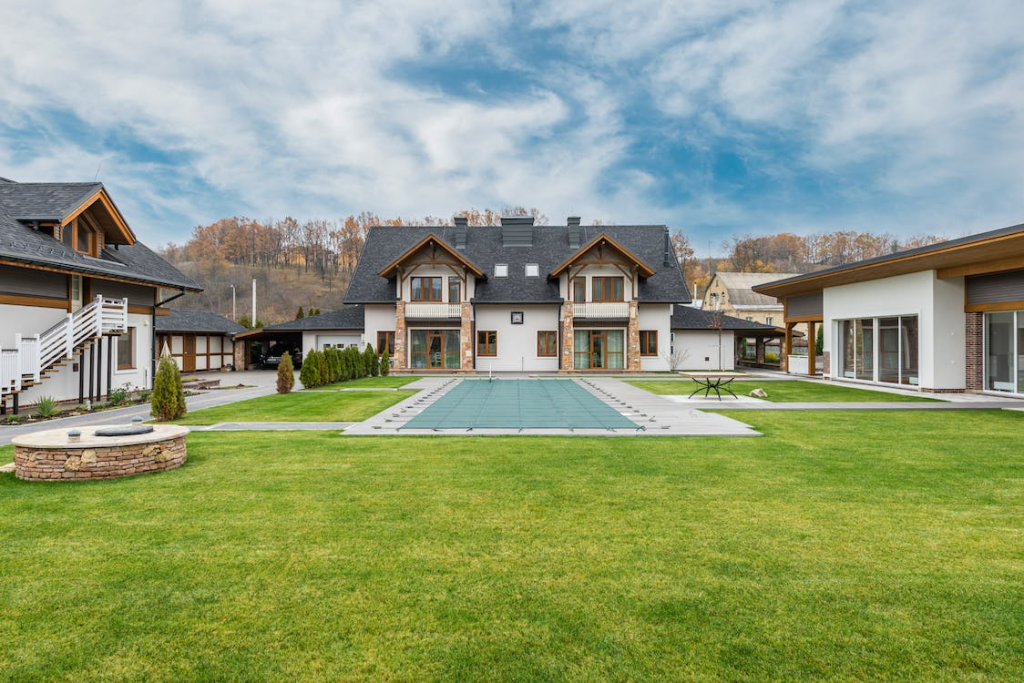Increasingly, people are recognizing the importance of making eco-friendly and sustainable choices. This shift in priorities is not only about lifestyle or food consumption habits but extends to a vast array of areas.
One such area is construction and real estate, where the preference for green, sustainable options is growing rapidly. This trend has significant implications for roofing projects too.
Utilizing environmentally friendly materials and methods in roofing has become more than a mere choice; it’s becoming a necessity.
It’s not just about reducing our carbon footprint—sustainable roofing systems also offer long-term cost efficiencies, beneficial to both homeowners and property developers.
But which option is best in terms of eco-friendliness and sustainability? Keep reading to find out below.
Factors That Determine a Roof’s Eco-Friendliness
- Material: The material of the roof is a crucial factor in determining its eco-friendliness. Ideally, eco-friendly roofing materials are durable, sustainably sourced, or made using recycled items.
- Lifespan: The lifespan of a roofing material plays a significant role in its environmental impact. The longer the roof lasts before needing replacement, the more sustainable/eco-friendly it is. This is because such a roof reduces waste and conserves resources.
- Energy Efficiency: How well a roof insulates your home affects its eco-friendliness. Roofs that regulate indoor temperatures effectively reduce the necessity for heating and cooling systems, saving energy in the long run.
- Production Process: Consideration should also be given to how energy-intensive a roofing material’s manufacturing process is which can contribute to carbon emissions significantly marking down on their eco-friendly score.
- End-of-Life Disposal: Lastly, whether a material can be safely disposed of or better yet recycled at the end of its life cycle plays an important role in gauging its environmental friendliness.
Roofing Costs
While it’s not directly related to eco-friendliness, the financial aspect is an important consideration. Eco-friendly options may require a higher initial investment for materials and installation. However, these costs often balance out over time due to decreased maintenance and repair expenses.
Keep in mind, though, that prices can vary widely based on the materials’ source, transport needs, labor costs as well as regional differences in pricing.
A sustainable choice is also about affordability… It should make long-term economic sense for it to appeal to eco-conscious homeowners and property developers.
How to Find the Right Roofing Contractor (e.g. in New Orleans)
Finding the right contractor– especially for eco-friendly roofing options can significantly impact your project’s success. And in many cases, it all boils down to researching the local roofing industry. Going local!
For instance, in New Orleans, a local roofer offers valuable insights into materials that perform well amidst local weather conditions and adhere to building regulations.
A trustworthy roofing contractor can guide you through sustainable, cost-effective choices suitable for your specific needs. Therefore, picking a contractor with experience and a solid reputation in the area is key to a successful and sustainable roofing project.
Besides local presence and experience, other crucial factors to consider before making your pick should include:
- Roofer Licensing and Insurance
- Professional certification
- References
- Warranty and workmanship guarantee
- Detailed quote and contract
- Good communication
Comparing 6 Popular Roofing Options for Eco-Friendliness
1. Asphalt Shingles
Asphalt shingles are common in many parts of the globe– thanks to their low cost and ease of installation. However, they’re made from petroleum products.
Combined with their relatively short lifespan of 15 to 30 years, this gives them a low rank on the list. They aren’t the most eco-friendly choice due to their non-renewable source and high replacement need.
2. Metal Roofs
Metal roofs are eco-friendly because they’re largely made from recycled materials. Furthermore, a metal roof can last up to 50 years or more, reducing the need for replacement. Also, they reflect heat effectively, which can decrease your energy usage significantly in warmer climates.
3. Wood Shakes
Wood shakes can be environmentally friendly if harvested responsibly because wood is a renewable resource. However, without proper maintenance, their lifespan can be significantly reduced, leading to more frequent replacements. Moreover, certain types of wood shakes may require chemical treatments that could harm the environment.
4. Solar Roofs
Solar roofs are probably among the most eco-friendly choices available today. They generate renewable energy, which results in reduced utility bills while also lowering carbon emissions tremendously. Although the initial investment might be high, it offsets over time considering its life span and savings.
5. Slate and Tile Roofs
Slate and tile roofs are highly durable, often lasting for hundreds of years, therefore reducing the need for replacement and contributing to a decrease in waste. The process of manufacturing tiles, however, can be energy-intensive hence lessening its eco-friendly quotient.
6. Green Roofs
Green roofs are covered with vegetation and soil, much like gardening on the roof. This allows for heat absorption and reduction. The increased insulation results in lower energy usage, and also contributes to purifying the air around it.
While installation can be expensive and require special structural considerations due to its weightiness, these roofs take eco-friendliness to the next level by not only utilizing sustainable materials but actively benefiting the environment.
Verdict
In conclusion, we’ve journeyed through various roofing options, each with its unique environmental benefits and drawbacks. Although every material has its place in sustainable construction, our exploration highlights green or living roofs as the champions of eco-friendliness.
Their unparalleled contributions to air purification and energy conservation make them an attractive choice for a greener future. As we continue our efforts in embracing sustainability, making conscious choices like these can shape our ecological footprint significantly, one roof at a time.

